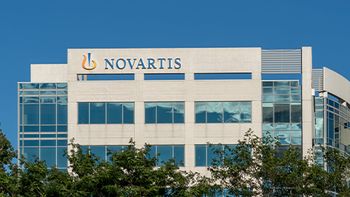
The scramble to ramp up CGT production
Cellular and genetic therapies (CGTs) developers are struggling to build capacity
There’s a lot of sorting out going on in the world of cellular and genetic therapies (CGTs) when it comes to “manufacturing” and “dispensing.” Manufacturing is in quote marks because, unlike nearly all biopharma products, CGTs usually start with a patient’s own cells, which are extracted by apheresis, conveyed to a lab-like facility where the cells are manipulated, often via CAR-T genetic engineering. Dispensing is in quote marks because, rather than reinjecting the cells at home or in a doctor’s office, reinfusion is necessarily performed in a well-equipped hospital setting.
On the manufacturing side, the latest step has been taken by Orchard Therapeutics, which acquired the portfolio of GSK’s early CGT efforts, notably Strimvelis, a treatment for a rare immunodeficiency known by its acronym as ADA-SCID, which was commercialized in 2016. Orchard is building a 150,000-sq. ft. facility in Fremont, CA, adding to sites in Foster City and Menlo Park, CA.
“We believe that this new facility, as an early investment in our own manufacturing, will not only drive efficiencies and scalability in terms of lentiviral vector and drug product development,” said Stewart Craig, PhD, chief manufacturing officer of Orchard, “it will also complement the capabilities of our existing vector and drug product manufacturing partners to support the potential launch of our gene therapy clinical product candidates.”
Craig’s statement alludes to another critical element in CGT commercialization: the production, where appropriate, of “viral vectors” that transport genetic material into cells such that the genes become incorporated into the cells’ DNA. There are a variety of vector mechanisms in use; Orchard is banking on “lentiviruses,” a type of which the HIV virus is an example. Producing viral vectors is now its own manufacturing business, with a number of companies involved in producing them on a contract manufacturing basis.
Novartis, owner of the first CAR-T-derived genetic therapy, Kymriah, has been using facilities in New Jersey originally developed by Dendreon, an early pioneer in cellular therapy; according to press reports, the company is having trouble keeping up with demand (pictured: receipt of patient T cells at Novartis). In July, it signed a development agreement with a French company, CellforCure, to ramp up production in Europe; then, in December, it offered to acquire CellforCure outright. CellforCure is finalizing construction of a 39,000-sq. ft. facility in Les Ulis, France.
Healthcare provider network
Both Kymriah and Gilead’s analogous product, Yescarta, were approved by FDA in 2017 with REMS (Risk Evaluation and Mitigation Strategies) programs in place, which require the companies to monitor the drugs’ dispensing and patient outcomes, and report results back to FDA. Part of the rationale for this is the threat of a condition known as cytokine release syndrome (CRS), which can seriously affect the health of treated patients. Kymriah was approved more or less with the simultaneous approval of a Genentech product, Actemra (tocilizumab), which counters the effects of CRS. Thus, the hospital settings where CGTs are being applied have their own responsibilities.
To that end, Gilead has authorized nearly 70 cancer centers across the US for prescribing Yescarta. Novartis has authorized, at latest count, 76 facilities.
Talk continues in business-strategy circles over the concept of “decentralized” CGT production, specifically the ability to produce useful therapies in a hospital setting. Some observers have pointed out that the financial resources for health systems to make such investment is limited; moreover, the question of how a given therapy can be duplicated across many cGMP locations effectively is difficult to answer. For the moment, at least, the main momentum seems to be the conventional route of startup biotech companies building facilities (or licensing contract manufacturers) and seeking FDA approval.
All this is occurring even as a potentially next-generation step is being taking in CGTs—use of “allogenic” cells, which start with the same types of donor cells as the autologous therapies, but are altered not only to provide the genetic punch, but also to prevent the autoimmune response (host versus graft disease) typical of non-native cells and tissues. Allogenic therapies hold the promise of simplifying patient therapy because they are “off the shelf” products, and because they could be substantially less expensive. Allogene Therapeutics, started up in late 2017, went public last October, garnering $373 million in investment, and has products in Phase I and preclinical stages; there are numerous other players. Last spring, it in-licensed 16 allogenic projects from Pfizer for further development. Cellectis, another leading allogeneic developer, also has several products in Phase I trials.
Newsletter
Stay ahead in the life sciences industry with Pharmaceutical Commerce, the latest news, trends, and strategies in drug distribution, commercialization, and market access.





